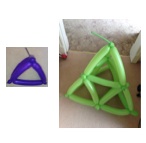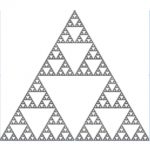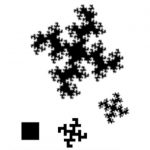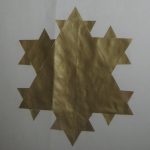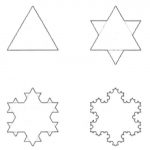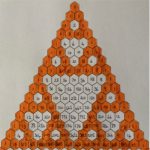There are many investigations and projects you could do based on the Sierpinski Tetrahedron.
For a start: how many small tetrahedra, like the blue model shown, were used to make the 6.5 metre high red balloon model shown below.
The smallest tetrahedron (Stage 0), the blue model, is made from 6 balloons, each […]
Start by watching the video https://youtu.be/B2dkNPaTmDY
Each student should have a stage 3 Sierpinski triangle of edge length about 6.5 cm and a colouring pen, and should colour their triangle as shown by the black filling in the small diagram.
The class will make poster of a stage […]
1. If the red square has area 1 square unit. What is the area enclosed by the stage 1 squareflake?
2. What is the area enclosed by the stage 2 squareflake? What about the stages 3 and 4 squareflakes?
3. If replacing each line segment on the edge with the zig-zag is […]
The curve, also known as the ‘snowflake curve’, was invented in 1904 by the Swedish mathematician Helge von Koch.
Take a large piece of backing paper, and either draw an equilateral triangle with edges of length 27 cm or cut a triangle from coloured paper and stick it on […]
Image starting with an equilateral triangle and replacing each edge by a zig-zag curve made up of 4 pieces. Each of the 4 pieces is one third of the length of the line segment it replaces so it looks as if equilateral triangles have been attached to the shape. Now imagine repeating […]
Can you see what the rule is for filling numbers in the hexagons? Continue the pattern using the same rule. If you get it right the bottom row will start 1, 9, 36, 84, …
Shade the hexagons where the number inside is odd all in one colour. Using a contrasting colour, […]
South Africa COVID-19 News
Here is the official website for COVID-19 updates.
Login
SUPPORT AIMSSEC

